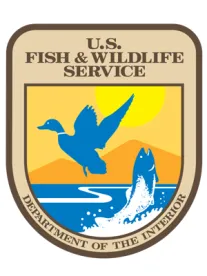On January 7, the US Fish and Wildlife Service (USFWS or Service) published a final rule providing that the scope of the prohibition of take under the Migratory Bird Treaty Act (MBTA or Act) applies “only to actions directed at migratory birds, their nests, or their eggs,” and does not prohibit incidental take (i.e., take that is not the purpose of an activity). 86 Fed. Reg. 1134 (January 7, 2021). The rule, which lists an effective date of February 8, 2021, represents the latest in a series of efforts by recent presidential administrations to implement competing interpretations of the MBTA. If it stands under the incoming administration, this rule will have important implications for the wind energy industry, among other sectors.
Historical debate over the meaning of “take” under the MBTA
The MBTA is a criminal statute enacted in 1918 and is one of the oldest wildlife protection laws in the United States. The Act covers more than 1,000 bird species, including approximately 90 percent of all birds occurring in North America, many of which are common and abundant species. The MBTA makes it a crime for any person to “pursue, hunt, take, capture, kill, attempt to take, capture or kill, possess, offer for sale, sell, offer to purchase, purchase, … ship, … transport, … carry, … receive … at any time, or in any manner, any migratory bird, … or any part, nest, or egg of any such bird.” 16 U.S.C. § 703. Responsibility for enforcing the MBTA falls on USFWS, an agency within the US Department of Interior (DOI).
As we explained in previous articles on the subject (USFWS Makes Another Move to Exclude Incidental Take from the Migratory Bird Treaty Act; De-Criminalizing the Inevitable: Some Hope for Rationalizing the MBTA?; The Other Shoe Drops on the MBTA; US Fish & Wildlife Service To Seek Dismissal of Suits Challenging MBTA Legal Opinion), uncertainty has prevailed for years regarding the scope of the take prohibition under the MBTA. DOI and USFWS have attempted in recent years, first under the Obama Administration and then the Trump Administration, to clarify the meaning of “take” in a manner that is consistent with each Administration’s interpretation of legislative intent, notions of constitutional due process and practical policy considerations.
The original purpose of the MBTA, as the Service explains in the preamble to the final rule, was to regulate the extreme over-hunting of migratory birds, largely for commercial purposes, that had occurred over the years. 86 Fed. Reg. at 1137. As such, the Act was initially interpreted as covering only intentional takings of birds. The Service points out in the preamble to the rule that it was not until the 1970s, more than 50 years after adoption of the MBTA, that federal prosecutors began to enforce the MBTA for incidental actions, even though there had been no legislative change to support the new approach to enforcement. 86 Fed. Reg. at 1139. Since that time, persons engaging in an activity likely to result in a take, however unintentional and otherwise lawful, have faced the risk of criminal prosecution, subject to the exercise of enforcement discretion by the Service.
Meanwhile, the Federal Courts of Appeal have split on the meaning of “take,” with opinions from the Fifth and Eighth Circuits holding that the MBTA does not prohibit incidental take and opinions from the Second and Tenth Circuits holding that it does. For this reason, risk of enforcement under the MBTA has often depended on the state in which an action occurs that could result in incidental take of migratory birds.
On December 22, 2017, the Solicitor’s Office of DOI issued a detailed legal opinion, known as M–37050, siding with the Fifth and Eighth Circuits and concluding that the MBTA’s take prohibition applies only to “direct and affirmative purposeful actions that reduce migratory birds, their eggs, or their nests, by killing or capturing, to human control,” and does not apply to take that is incidental to an otherwise lawful actions that results—even directly and foreseeably—in the death of a protected bird. The opinion reversed a prior DOI opinion (M-37041) issued in January 2017 by the outgoing Obama administration concluding that the MBTA did prohibit incidental take of migratory birds. In April 2018, the USFWS modified its enforcement policy to conform with the January 2017 legal opinion and issued a guidance memorandum clarifying that “the MBTA’s prohibitions on take apply when the purpose of an action is to take migratory birds, their eggs, or their nests,” and that “[c]onversely, the take of birds, eggs or nests occurring as a result of an activity, the purpose of which is not to take birds, eggs or nests, is not prohibited under the MBTA.”
Lawsuits filed in federal district court by environmental groups and eight states challenging DOI’s December 2017 legal opinion were consolidated under the case styled Natural Resources Defense Council et al. v. U.S. Department of the Interior et al., Case No. 18-CV-4596 (VEC) (S.D.N.Y.). On August 11, 2020, the district court granted the plaintiffs’ summary judgment motions and vacated M–37050 on the ground that it was contrary to the plain meaning of the MBTA and departed from the Service’s longstanding enforcement policy without providing notice and opportunity for public comment.
USFWS published the proposed version of the January 7 rule while this lawsuit was pending. 85 Fed. Reg. 5915 (Feb. 3, 2020). The regulatory text set forth in the final rule, which is to be codified at 50 C.F.R. §10.14, states as follows:
The prohibitions of the Migratory Bird Treaty Act (16 U.S.C. 703) that make it unlawful at any time, by any means or in any manner, to pursue, hunt, take, capture, or kill migratory birds, or attempt to engage in any of those actions, apply only to actions directed at migratory birds, their nests, or their eggs. Injury to or mortality of migratory birds that results from, but is not the purpose of, an action (i.e., incidental taking or killing) is not prohibited by the Migratory Bird Treaty Act.
The Service explains in the preamble to the final rule that the rule is intended to resolve the inconsistency and uncertainty regarding MBTA enforcement which has resulted in what the Service describes as a “convoluted patchwork of legal standards[,] all purporting to apply the same underlying law,” and to establish “a national standard that sets a clear, articulable rule for when an operator crosses the line into criminality.” 86 Fed. Reg. at 1142. The Service also explains that the rule serves to further policy goals of promoting otherwise lawful economic activity, which, in the Service’s view, “should not be functionally dependent upon the ad hoc exercise of enforcement discretion.” 86 Fed. Reg. at 1142. Under the new rule, the Service asserts that businesses will have “better information for planning projects and achieving goals.” 86 Fed. Reg. at 1160.
Implications for Wind Energy Facilities
Wind energy facilities have long faced the risk of criminal prosecution under the MBTA for avian fatalities resulting from collisions with wind turbines blades. Because there currently is no regulatory program under the MBTA to authorize incidental take of protected birds, such as through a permit, wind energy facilities face the prospect enforcement any time an injury or fatality has resulted from normal operations mitigated only by the exercise of the Service’s discretion not to prosecute. Wind facility operators may enhance the likelihood they will benefit from favorable enforcement discretion by following the Service’s Land-Based Wind Energy Guidelines (2012), which are voluntary guidelines setting out best practices to avoid incidental take of protected birds. However, compliance with these guidelines does not provide enforceable legal protections. The guidelines explicitly state that “it is not possible to absolve individuals or companies from MBTA” and that the Service may only consider compliance with the guidelines in exercising its discretion whether to refer an individual or company to the Department of Justice for prosecution. See U.S. Fish and Wildlife Service, Land-Based Wind Energy Guidelines 6 (Mar. 23, 2012). In fact, USFWS has taken enforcement action under the MBTA against the operators of wind projects that followed key aspects of the voluntary guidelines for the take of golden eagles and other migratory birds killed by collisions with turbine blades, so it should not be assumed that wind energy facilities will get a pass on MBTA enforcement simply due to fact that they provide renewable energy that is desired to achieve other environmental protection goals. Indeed, as the Service noted in the preamble to the final rule, “[I]t is literally impossible for individuals and companies to know exactly what is required of them under the law when otherwise-lawful activities necessarily result in accidental bird deaths,” because ”[e]ven if they comply with everything requested of them by the Service, they may still be prosecuted, and still found guilty of criminal conduct.” 86 Fed. Reg. at 1141.
In recent years, because of the circuit split, the risk of liability for a wind farm under the MBTA depended largely on the federal circuit in which the facility is located. Since DOI issued its December 2017 legal opinion and the Service modified its enforcement policy to conform to that opinion, wind energy facilities have faced little risk of prosecution under the MBTA, regardless of location, although the long-term viability of that legal opinion standing alone has always been in doubt. Now that the opinion has been codified by agency rule, DOI’s interpretation of “take” stands on somewhat firmer ground, although it is subject to reversal by the incoming Biden Administration. Because the final rule will take effect after Inauguration Day 2021, the Biden Administration could place a regulatory freeze on the rule for up to 60 days. It is considered likely that the Biden Administration will implement regulatory freezes for all pending rules (as every other administration has done in recent years). The Biden Administration could also issue a proposed rule to further delay the effective date or to replace the rule with a new rule, but it is unlikely that any such rulemaking could be completed before the 60-day freeze expires and the rule takes effect. Once the new rule goes into effect, any change would require new notice-and-comment rulemaking or a successful court challenge, unless Congress takes action. Now that Democrats have won the Presidency and have gained majorities in both the House of Representatives and the Senate, it is possible that the January 7 rule will be rescinded under the Congressional Review Act (CRA, 5 U.S.C. §§ 801-808). The CRA allows Members of Congress to introduce a “joint resolution of disapproval” of rules finalized during a specified lookback period at the end of a presidential administration (which would encompass the January 7 MBTA rule), and if Congress approves the resolution by a simple majority of each chamber and the resolution is signed by the President (or Congress successfully overrides a presidential veto), the rule to which the resolution applies is rescinded. A rule rescinded through the CRA may not be reissued in “substantially the same form” without subsequent statutory authorization. (The CRA does not define “substantially the same form” and the federal courts have not ruled on the meaning of that phrase in the context of the CRA.) With or without the CRA, the January 7 MBTA rule is likely to be short-lived, as the pendulum appears poised to swing back on the interpretation of the scope of the take prohibition under the MBTA.






 />i
/>i
